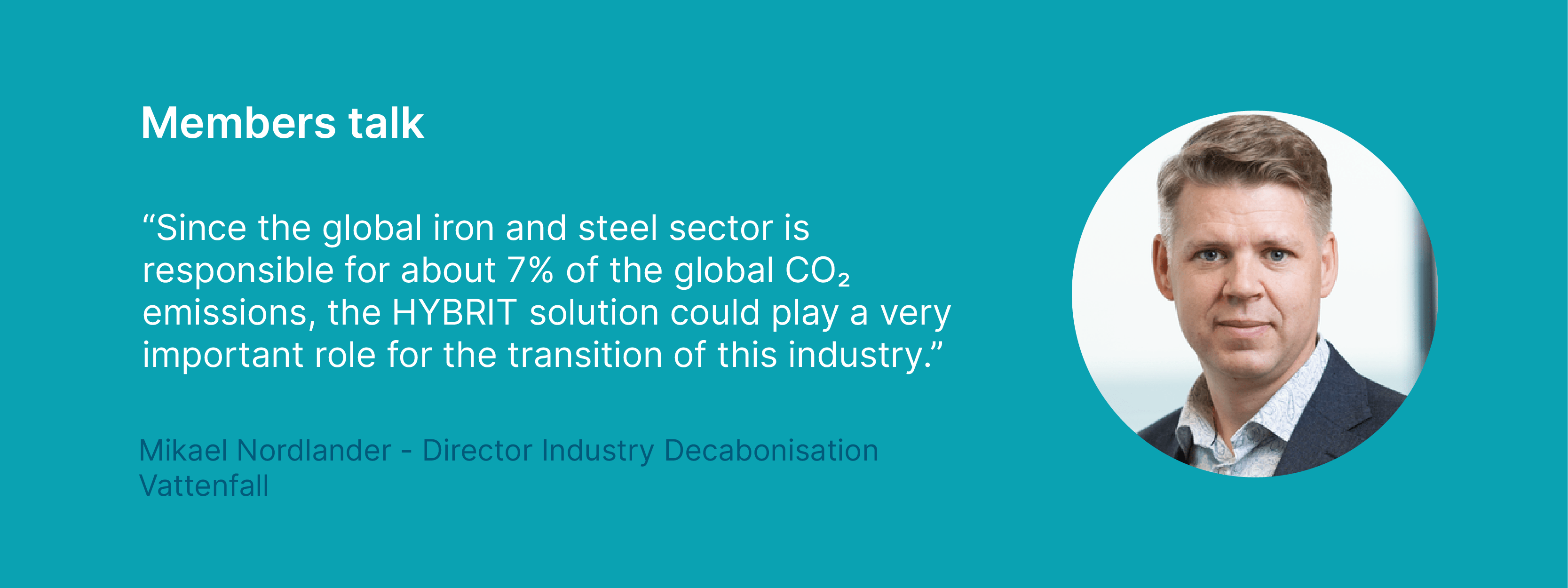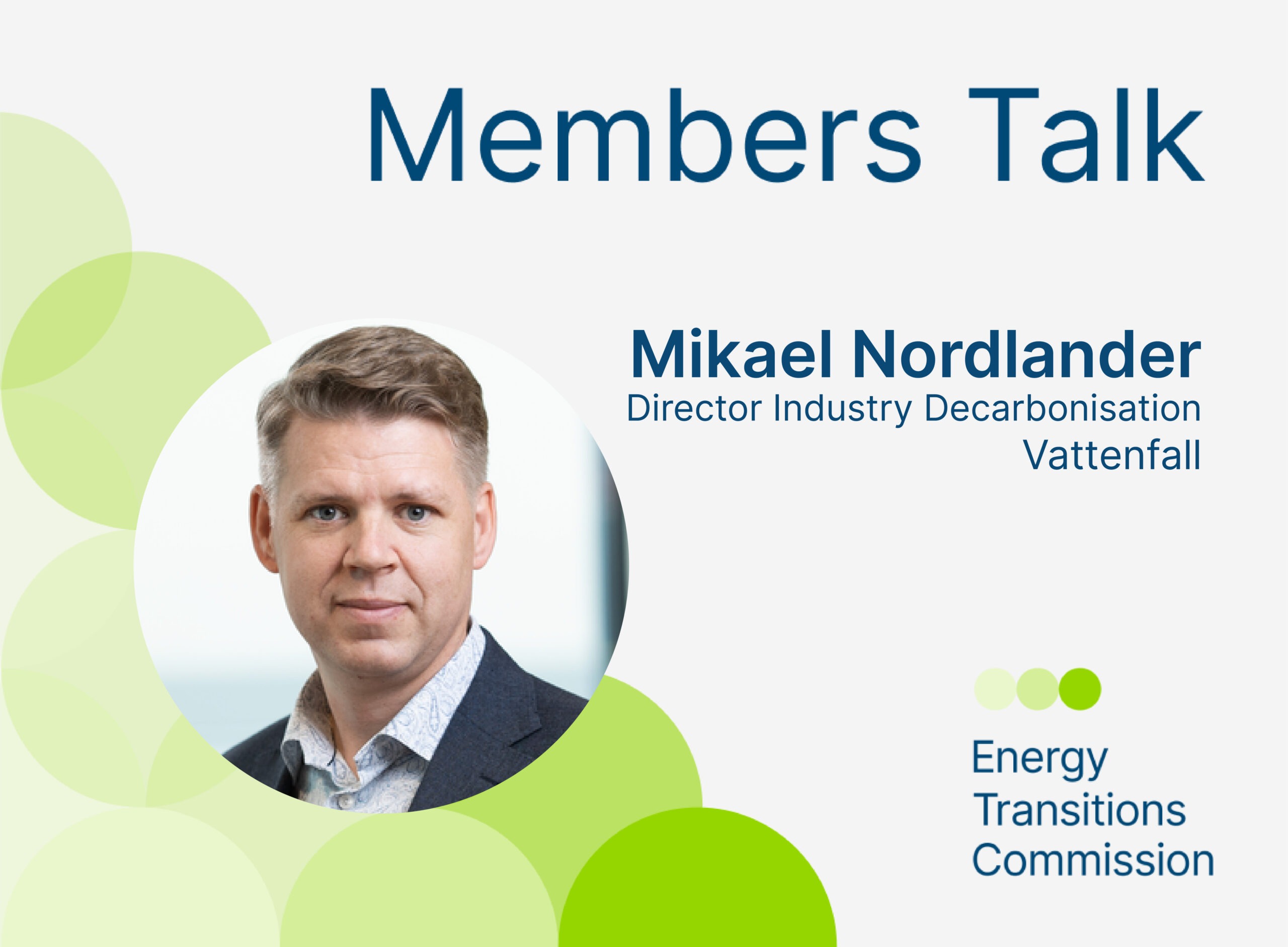Get to know our members and what being part of the ETC means to them. We are pleased to share an exclusive interview with Mikael Nordlander, Director Industry Decarbonisation at Vattenfall

What drew your organisation to join the ETC?
Actually, the ETC found us as we were developing the HYBRIT project for fossil free iron and steel with SSAB and LKAB. We realized that Vattenfall and the ETC shared the same views and approach to tackling the hard-to-abate sectors’ transition. Also, we were impressed with the competent, crisp and clear-sighted analysis capabilities of the ETC.
What do you see as the ETC’s most impactful achievement since you’ve been a Representative?
The ETC has gradually built credibility by daring to be bold in its messages. By applying a back casting methodology, being very solution-oriented and building its conclusions on a solid base of facts and science, the ETC has become a trustworthy reference. Therefore, it’s hard to name a single project or report – it is rather the long-term, hard-working effort of the ETC team under the leadership of Lord Adair Turner leading to this position, that I see as the biggest achievement.
What do you see as the biggest obstacle on the journey to net-zero?
To stay on a joint course through the transition, although the journey will likely be a bumpy one. The world is experiencing increasing effects of climate change, wars, increasing inequality, polarisation… this growing list of factors makes the prerequisites for a successful transition more demanding.
At the same time, the solutions we need are often complex and benefits are not immediate or perfectly distributed, but nevertheless require long-term perspectives and persistence. Here, the ETC is playing an important role in describing both the situation and the solutions needed in a pedagogic and honest but still positive way, making it easier to shape inclusive stories about the future that give hope.
What are the key milestones you see on the road to net-zero, and why?
We need to reach the tipping point for development and deployment of some key enabling technologies for the transition. We are starting to see that happening for PV [Photovoltaic] and batteries, but it is needed also for other fossil-free technologies. We also need to shape the frameworks for markets in a way that the transition becomes more profitable and less risky than the fossil business-as-usual. For example, by including externality costs for fossil technologies and initial stimulation of fossil free solutions. This is partly happening but needs to be more widespread. To really unleash the speed and force of the transition, we eventually need to reach a state where the transition becomes desirable, not only necessary. The power of good examples cannot be overestimated here.
What is the one necessary change you feel most personally passionate about in the transition journey?
Since 2016, we have been working hard together with Swedish heavy industry to replace fossil fuels with fossil free hydrogen and electricity, for example, in the HYBRIT project where we have developed solutions for a fossil free value chain for iron- and steelmaking together with SSAB and LKAB. Eight years and €200 million later, we have proven that the technology works and is ready to scale up. Since the global iron and steel sector is responsible for about 7% of global CO2 emissions, the HYBRIT solution could play a very important role for the transition of this industry. Having the opportunity to be part of setting up and realising such a project is a great privilege.



